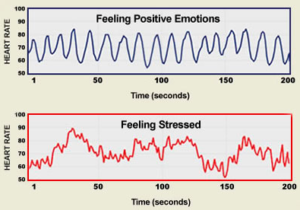“We are the stories we tell ourselves." - Joan Didion
Counseling
Counseling is an avenue for emotional expressions. So intimately are the mind and body connected that when we imagine seeing a butterfly, the same areas of the brain light up as when we actually look at the butterfly. The same is true when we imagine hearing our favorite songs or tasting our favorite desserts. The brain does not distinguish between real and imagined, and this has vast implications.
Whatever "stories" we tell ourselves, our brains respond by producing the appropriate biochemical changes to prepare our bodies for the events that are happening in our minds. If we lived in constant fear of missed deadlines or worries over our health, the brain floods the body with stress hormones that promote inflammation and degeneration. The reverse is also true: if we lived in a state of ease, the brain bathes the body with healing hormones that promote growth and cellular repair. This is how our thoughts become our biology.
Our body carries the story of our life up to the present moment. In counseling, we explore these "stories" in greater depth while parts of the stories may be reflected back with new insights. When we can understand our past, then we can appreciate our present so that we can engineer our future.
Hypnotherapy
Hypnotherapy is a tool to access information stored in subconscious awareness.
Our brains have two sides, and each half specializes in different functions. In our daily lives, the left-brain is always working hard to help ensure survival, yet during any event or activity, the right brain is just as active in registering the information. Because the right-brain tends to be less dominant, its voice is not often heard. During a hypnotherapy session, you will be guided through induction techniques to facilitate deep relaxation, which allow the left-brain to rest while we converse with the right-brain. Old habits, memories or traumatic events may appear differently after we hear to what the right-brain has to say. When we understand the subconscious reasons for our behaviors, we have a choice to change them.
The information that comes through during a hypnotherapy session is from the client’s subconscious mind, which resides just beneath the everyday consciousness level. Depending on the situation, the therapist may use different techniques to give framework to the session or guide the session toward certain therapeutic goals. Framing a session can anchor the session in this lifetime or past lifetimes, current events or past events. Common goals for hypnotherapy include understanding the root cause of certain behaviors, the origin of certain emotions or habits, residual unresolved feelings or memories, blockages that prevent success, etc.
Left Brain
|
Right Brain
|
Counseling vs Hypnotherapy
Similar to counseling, hypnotherapy can help identify goals and potential solutions to decrease mental stress, strengthen self-esteem, resolve emotional traumas, and promote behavioral change. While feelings are often discussed in counseling, the discussion is often approached from a left-brain perspective.
In contrast to counseling where the therapist is an active listener who helps the client makes connections to their personal narrative, during hypnotherapy, the client leads the session, allowing the emotions, images and symbolism to come through.
Biofeedback
Biofeedback is a tool for changing our internal programming and autonomic functions. By the time we are adults, most of us have developed habitual responses to certain situations, especially under stress.
There are several broad categories on how we tend to respond to stress:
- Stressed Posture
- Stressed Muscles
- Stressed Breathing
- Stressed Body Focus
- Stressed Emotions
- Stressed Attention
While biofeedback may often be associated with being hooked up to machinery that measures heart rate, respiratory rate, muscle tension, and skin sweating, biofeedback can be done without any technology by simply reflecting back what is going on in the body and applying the appropriate tool to reorient the body to stress. For example, exercise and movement can be helpful for those experiencing stress by changes in their posture, and mindfulness meditation may be recommended for those with stressed attention.
Only through awareness do we realize we have a choice.
